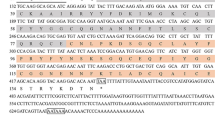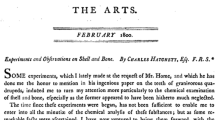Abstract
Bacillus licheniformis CBFOS-03 is a chitinase producing bacteria isolated from oyster (Crassostrea gigas) shell waste. We have cloned and expressed the chi18B gene of B. licheniformis CBFOS-03, which encodes a glycohydrolase family 18 chitinase (GH18). Chi18B is a predicted 598 amino acid protein that consists of a catalytic domain (GH18), a fibronectin type III domain (Fn3), and a chitin binding domain (CBD). Purified Chi18B showed optimum chitinase activity at pH 9 and 55 °C, and activity was stimulated with 25 mM Mn2+. In kinetic analysis, Chi18B showed Km values of 9.07 ± 0.65 μM and 129.27 ± 0.38 μM with the substrates 4-methylumbelliferyl-N-N′-diacetylchitobiose and α-chitin, respectively. Studies of C-terminal deletion constructs revealed that the GH18 domain with one amino acid in C-terminal region was sufficient for chitinase activity; however, fusions of full length and CBD-deleted constructs to green florescent protein (GFP) and yellow florescent protein (YFP) suggest that the C-terminus is supposedly important in binding to shell powder. Full length Chi18B with GFP showed green fluorescence with oyster shell powder, but GH18+Fn3 with GFP did not. Similarly, full length Chi18B with YFP showed yellow fluorescence with clam (Chamelea gallina) shell and disk abalone (Haliotis discus) shell powder, but GH18+Fn3 with YFP construct did not. So, the CBD domain of Chi18B appears to play an important role in binding of oyster and other marine shells. It is likely to be used as a probe to identify the presence of chitin in marine shells like oyster shell, clam shell, and disk abalone shell using fusions of Chi18B with fluorescent proteins.







Similar content being viewed by others
References
Bradford MM (1976) A rapid and sensitive method for the quantitation of microgram quantities of protein utilizing the principle of protein-dye binding. Anal Biochem 72:248–254
Carroad PA, Tom RA (1978) Bioconversion of shellfish waste process conception and selection of microorganisms. J Food Sci 43:1158–1161
Chang MC, Lai PL, Wu ML (2004) Biochemical characterization and site-directed mutational analysis of the double chitin-binding domain from chitinase 92 of Aeromonas hydrophila JP101. FEMS Microbiol Lett 232:61–66
Checa A (2000) A new model for periostracum and shell formation in Unioidae (Bivalvia, Mullusca). Tissue Cell 32:405–416
Chen HC, Hsu MF, Jiang ST (1997) Purification and characterization of an exo-N-N′-diacetylchitobiohydrolase-like enzyme from Cellulomonas flavigena NTOU 1. Enzyme Microb Technol 20:191–197
Chuang HH, Lin FP (2007) New role of C-terminal 30 amino acids on the insoluble chitin hydrolysis in actively engineered chitinase from Vibrio parahaemolyticus. Appl Microbiol Biotechnol 76:123–133
Chuang HH, Lin HY, Lin FP (2008) Biochemical characteristics of C-terminal region of recombinant chitinase from Bacillus licheniformis-implication of necessity for enzyme properties. FEBS J 275:2240–2254
Cottrell MT, Moore JA, Kirchman DL (1999) Chitinases from uncultured marine microorganisms. Appl Environ Microbiol 65:2553–2557
Evvyernie D, Yamazaki S, Morimoto K, Karita S, Kimura T, Sakka K, Ohmiya K (2000) Identification and characterization of Clostridium paraputrificum M-21, a chitinolytic, mesophilic and hydrogen-producing bacterium. J Biosci Bioeng 89:596–601
Falini G, Fermani S (2004) Chitin mineralization. Tissue Eng 10:1–6
Hu SB, Liu P, Ding XZ, Yan L, Sun YJ, Zhang YM, Li WP, Xia LQ (2009) Efficient constitutive expression of chitinase in the mother cell of Bacillus thuringiensis and its potential to enhance the toxicity of Cry1Ac protoxin. Appl Microbiol Biotechnol 82:1157–1167
Islam SMA, Hong SJ, Cho KM, Math RK, Heo JY, Lee YH, Lee KS, Yun HD (2009) Bacterial diversity and structural changes of oyster shell during 1-year storage. Microb Ecol 57:221–228
KDI (Korea Development Institute) (2002) Designation of shell meal fertilizer as good recycling products. Report of Economic Policy (in Korean)
Kojima M, Yoshikawa T, Ueda M, Nonomura T, Matsuda Y, Toyoda H, Miyatake K, Arai M, Fukamizo T (2005) Family 19 chitinase from Aeromonas sp. no. 10 S–24: role of chitin-binding domain in the enzymatic activity. J Biochem 137:235–242
Kudan S, Pichyangkura R (2009) Purification and Characterization of Thermostable Chitinase from Bacillus licheniformis SK-1. Appl Biochem Biotechnol 157:23–35
Kuranda MJ, Robbins PW (1991) Chitinase is required for cell separation during growth of Saccharomyces cerevisiae. J Biol Chem 266:19758–19767
LeCleir GR, Buchang A, Maurer J, Moran MA, Hollibaugh JT (2007) Comparison of chitinolytic enzymes from an alkaline, hypersaline lake and estuary. Environ Microbiol 9:197–205
Lee CH, Lee JY, Ha BH, Kim PJ (2005) Increased available phosphate by shell meal fertilizer application in upland soil. Korean J Soil Sci Fert 38:52–57
Lee CH, Lee DK, Ali MA, Kim PJ (2008) Effects of oyster shell on soil chemical and biological properties and cabbage productivity as liming materials. Waste Manag 28:2702–2708
Miller GL (1959) Use of dinitrosalicylic acid reagent for the determination of reducing sugar. Anal Chem 31:426–428
Saito N, Nei M (1987) The neighbor-joining method: A new method for reconstructing phylogenetic trees. Mol Biol Evol 4:406–425
Sambrook J, Russel DW (2001) molecular cloning: a laboratory manual, 3rd edn. Cold Spring Harbor Laboratory Press, MI, USA
Schutte UME, Abdo Z, Bent SJ, Shyu C, Williams CJ, Pierson JD, Forney LJ (2008) Advances in the use of terminal restriction fragment length polymorphism (T-RFLP) analysis of 16 S rRNA genes to characterize microbial communities. Appl Microbiol Biotechnol 80:365–380
Tang Y, Zhao J, Ding S, Liu S, Yang Z (2001) Purification and properties of chitinase from Enterobacter aerogenes. Acta microbiologica Sinica 41:82–86
Tirawongsaroj P, Sriprang R, Harnpicharnchai P, Thongaram T, Champreda V, Tanapongpipat S, Pootanakit K, Eurwilaichitr L (2008) Novel thermophilic and thermostable lipolytic enzymes from a Thailand hot spring metagenomic library. J Biotechnol 133:42–49
Toharisman A, Suhartono MT, Spindler-Barth M, Hwang JK, Pyun YR (2005) Purification and characterization of a thermostable chitinase from Bacillus licheniformis Mb-2. World J Microbial Biotechnol 22:733–738
Trachuk LA, Revina LP, Shemyakina TM, Chestukhina GG, Stepanov VM (1996) Chitinases of Bacillus licheniformis B-6839: isolation and properties. Can J Microbiol 42:307–315
Veith B, Herzberg C, Steckel S, Feesche J, Maurer KH, Ehrenreich P, Baeumer S, Henne A, Liesegang H, Merkl R, Ehrenreich A, Gottschalk G (2004) The complete genome sequence of Bacillus licheniformis DSM13, an organism with great industrial potential. J Mol Microbiol Biotechnol 7:204–211
Watanabe T, Ito Y, Yamada T, Hashimoto M, Sekine S, Tanaka H (1994) The roles of C-terminal domain and type III domains of chitinase A1 from Bacillus circulans WL-12 in chitin degradation. J Bacteriol 176:4465–4472
Wu SJ, Zhang LL, Wang JD, Chen JM (2007) Bacillus circulans WZ-12—a newly discovered aerobic dichloromethane-degrading methylotrophic bacterium. Appl Microbiol Biotechnol 76:1289–1296
Yamagami T, Funatsu G (1996) Limited proteolysis and reduction-carboxymethylation of rye seed chitinasea: role of the chitin-binding domain in its chitinase action. Biosci Biotechnol Biochem 60:1081–1086
Yoon GL, Kim BT, Kim BO, Han SH (2003) Chemical-mechanical characteristics of crushed oyster-shell. Waste Manag 23:825–834
Zheng YG, Chen J, Liu ZQ, Wu MH, Xing LY, Shen YC (2008) Isolation, identification and characterization of Bacillus subtilis ZJB-063, a versatile nitrile-converting bacterium. Appl Microbiol Biotechnol 77:985–993
Acknowledgments
This study was carried out with the support of "Cooperative Research Program for Agricultural Science & Technology Development (project number 20080101-030-002-001-03-00)," RDA, and by a grant number R01-2008-000-20220-0 from the Basic Research Program of Korea Science and Engineering Foundation, Republic of Korea. Shah Md. Asraful Islam is supported by scholarships from the BK21 Program, Ministry of Education and Human Resources Development, Korea.
Author information
Authors and Affiliations
Corresponding author
Rights and permissions
About this article
Cite this article
Islam, S.M.A., Cho, K.M., Hong, S.J. et al. Chitinase of Bacillus licheniformis from oyster shell as a probe to detect chitin in marine shells. Appl Microbiol Biotechnol 86, 119–129 (2010). https://doi.org/10.1007/s00253-009-2215-1
Received:
Revised:
Accepted:
Published:
Issue Date:
DOI: https://doi.org/10.1007/s00253-009-2215-1




